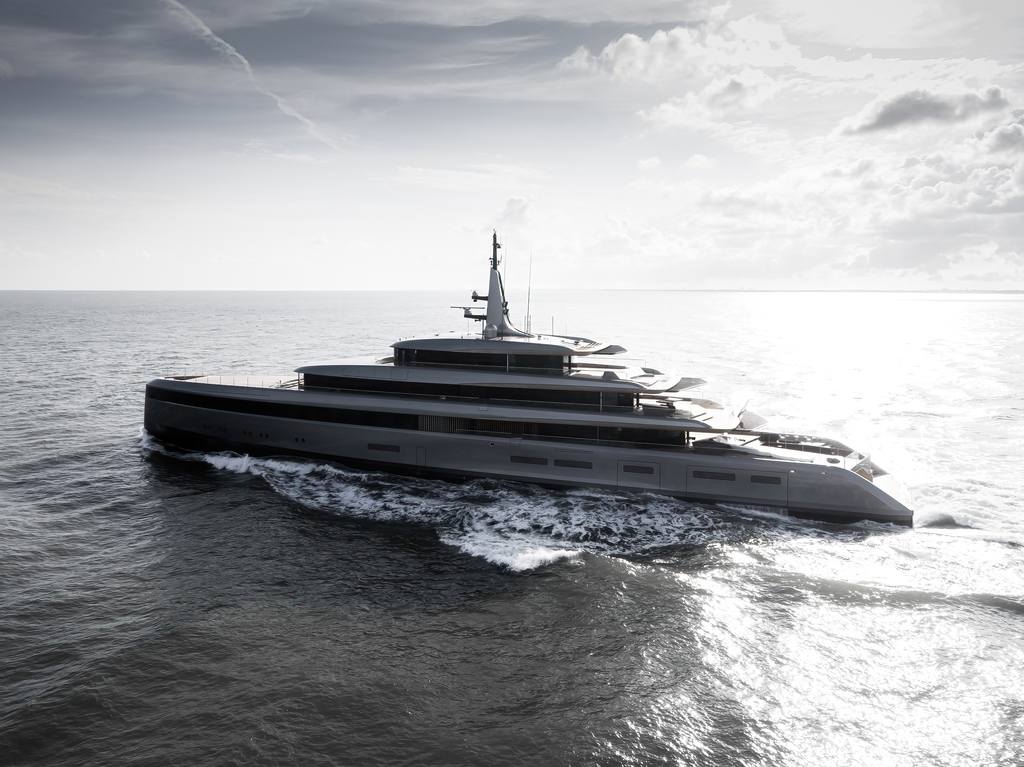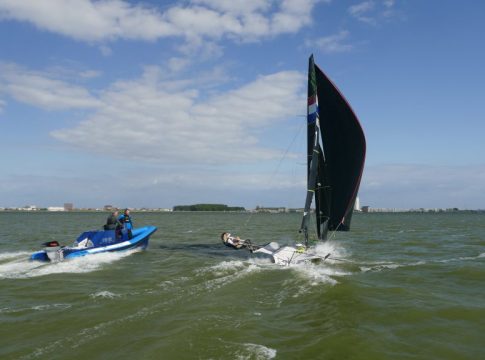Feadship is another step closer to the goal of producing carbon-neutral superyachts by 2030.
The recently built 84.20-metre Obsidian is the first of Feadship’s new generation of large yachts furthering carbon reduction through hulls optimised at cruising speed instead of top speed, weight control, advancements in electric propulsion, and the ability to run engines on non-fossil diesel fuel called HVO. In fact, the yacht’s trials were conducted with the generators running on this second-generation biofuel, reducing carbon emissions by 90% compared to yachts operating on fossil fuels.
The brief for the yacht was to be more energy efficient and emit less carbon than Feadship’s ground-breaking hybrid yacht, Savannah, which launched in 2015. Reducing the environmental impact by more than 30% would have been a tall order in any case, but the entire 12-month design period for Obsidian occurred at the height of a global pandemic. With Covid-19 lockdowns, none of the designers, engineers, or other parties were able to collaborate in person.
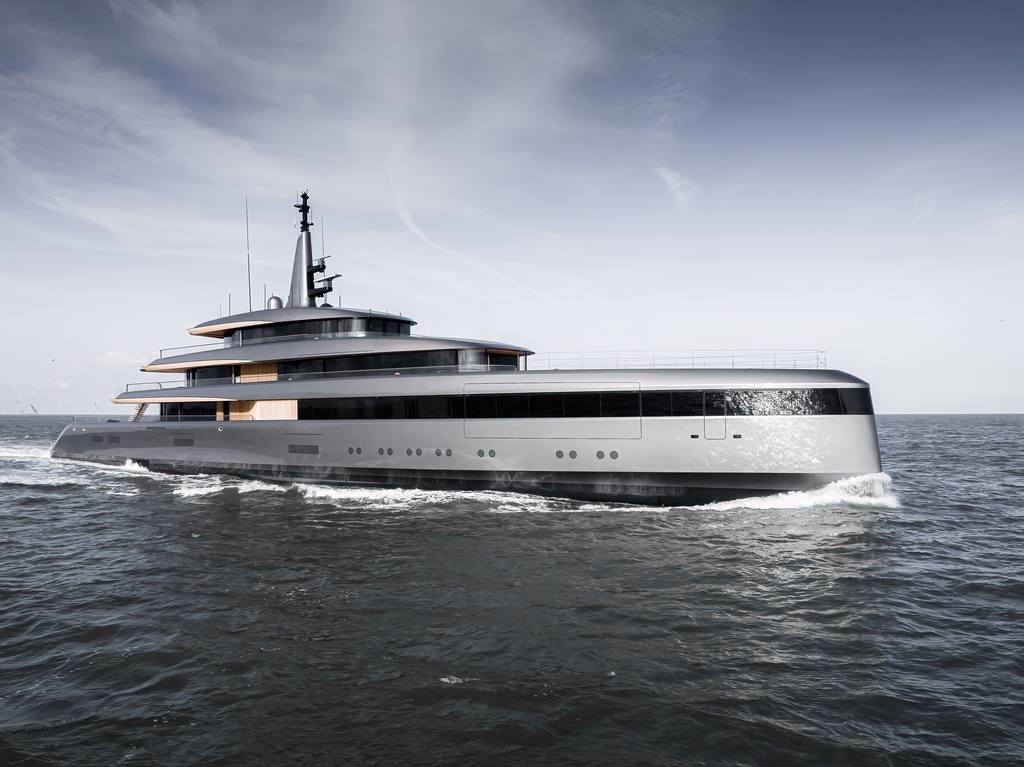
Working in parallel, Bram Jongepier, Senior Designer at Feadship De Voogt Naval Architects, developed a sustainability index, providing a great deal of guidance on how all of a yacht’s components and operations contribute to its carbon profile and environmental impact.
Reducing CO2 emissions is a top priority, but Feadship goes even further by addressing the overall environmental impact of its vessels. The emissions of nitric oxide and nitrogen dioxide (NOx), particulate matter, hydrocarbons, and the impact of building materials like steel, aluminium, fairing compounds, antifouling, teak, interior finishing, and more, are under scrutiny. This, together with CO2 emissions, is what we call environmental impact, which is calculated using life cycle assessments (LCA).
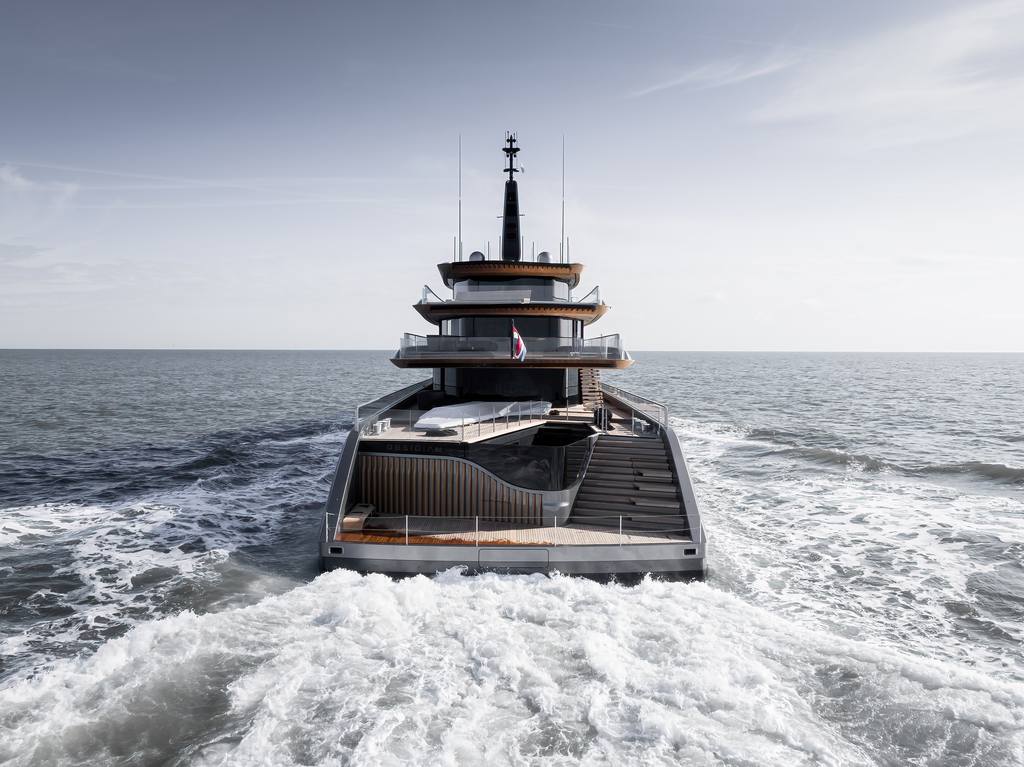
Yacht Environmental Transparency Index
Jongepier’s work became known as YETI, the Yacht Environmental Transparency Index. Operating on the philosophy that one cannot control what one cannot measure, the algorithms describing the environmental impact of CO2, NOx, particulate matter, shore power, and fuel production have been made freely available by Feadship to the signatories of the Water Revolution Foundation, a yachting industry association dedicated to driving sustainability in the superyacht industry through collaboration and innovation. This led to a Joint Industry Project (JIP) under the flag of the Water Revolution Foundation with twenty major partners in the yachting industry.
The YETI JIP produced a tool which, with data augmented now by other partners like engine manufacturers, predicts the environmental impact of a standardized operational year in the yacht’s lifecycle. Jongepier estimates that YETI effectively captures 90% of the total lifecycle of a yacht and each new build helps gather more data. It is estimated that Obsidian will operate with 27% less total environmental impact than a yacht of similar size launched only five years ago if run on fossil fuel, and 60% less when using HVO.
For Obsidian, the first step was building on innovation from the award-winning Savannah. Using Feadship’s Advanced Electrical Drive (FAED) program for diesel-electric hybrid power, Obsidian has 4.5 times more electrical storage capacity than our first hybrid yacht, Savannah. She has no drive shafts and no rudders, preventing added drag caused by these appendages. Propulsion and steering are supplied by a pair of Veth contra-rotating thrusters that deliver both functions. Veth’s experience with compact units for ships operating on rivers was seen as a perfect fit for a yacht specified for a relatively shallow draft. Feadship and Veth collaborated on computational fluid dynamics (CFD) analysis of the shapes of the drive legs and the propellors to maximize efficiency and minimize vibration, dampening vibration being another key component of the brief.
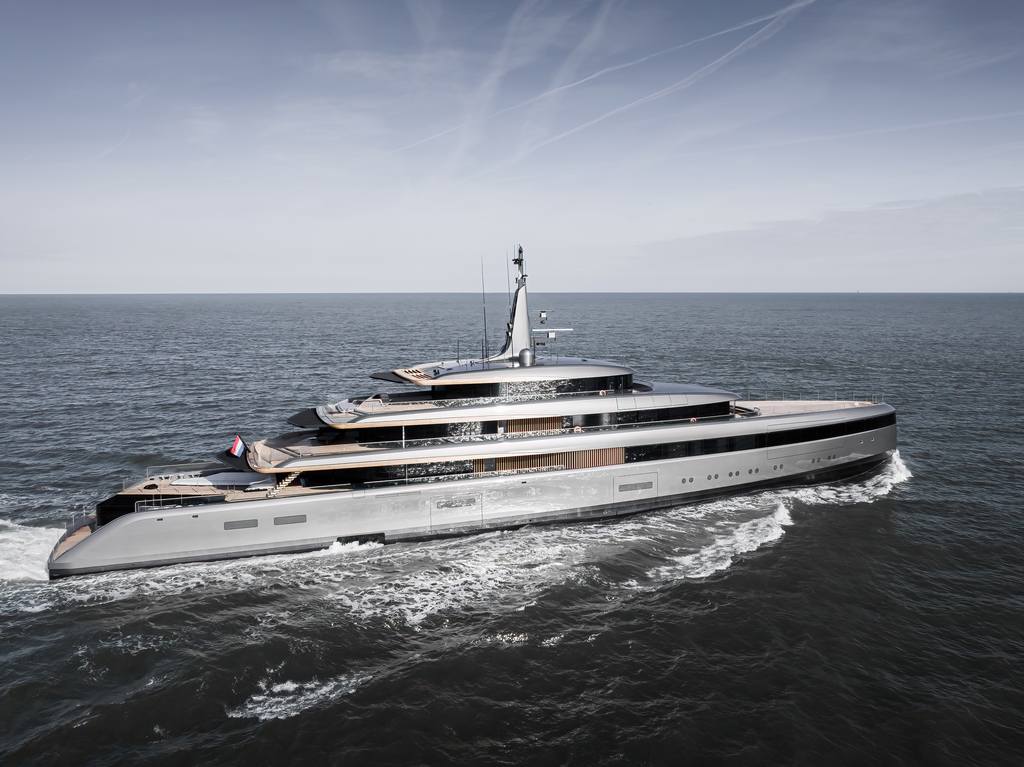
Powering it all is a 4.5 MWh battery bank that is charged by four generators — two large and two small, custom, variable speed units based on tweaked CatC32 engines with permanent magnet alternators that deliver power as needed. Where Savannah and Lonian – which launched in 2018 – operated on 560 volts, the DC system on Obsidian is a staggering 1,000-volt system because the yacht is fully powered by electricity. A total of 560 battery modules are housed in a special chilled room amidships on the tank deck, revealing another benefit of the hybrid system: The components no longer need to be adjacent. The thrusters are in the best location for steering and water flow, while the generators and their exhaust systems, batteries, and electrical switchboard are located elsewhere for optimal weight distribution and crew access. Obsidian should be able to cruise for 35 nm at 10 knots on batteries alone. At anchor, the batteries will provide silent operation for 10-15 hours.

Fuel savings
Advanced propulsion alone, however, would not result in the level of fuel savings required. When analysing Obsidian using the YETI tool, it revealed that about 60% of the energy consumed goes simply to powering the onboard lifestyle – the air conditioning, heating, hot water, lighting, cooking, entertainment electronics, pools, and laundry service. Reducing the energy needed to provide for the yacht’s “hotel” load became the target.
Several major innovations adapted for Obsidian address these target areas through peak load shaving and reducing HVAC demand through the computerized management of cooling guest and crew zones. But since making and using energy creates heat, capturing unwanted or “waste” heat to be used for other purposes became a key focus. Out of every 100kW of energy created by fossil fuel combustion in a typical internal combustion engine, only 35 to 40% is effective mechanical energy, with the rest being heat, usually discarded overboard with the water-cooling system and in the exhaust gasses. Feadship’s design and engineering team began by developing a much more comprehensive system than simply using generator cooling water to heat a swimming pool, a process that has become standard for many superyacht builders.
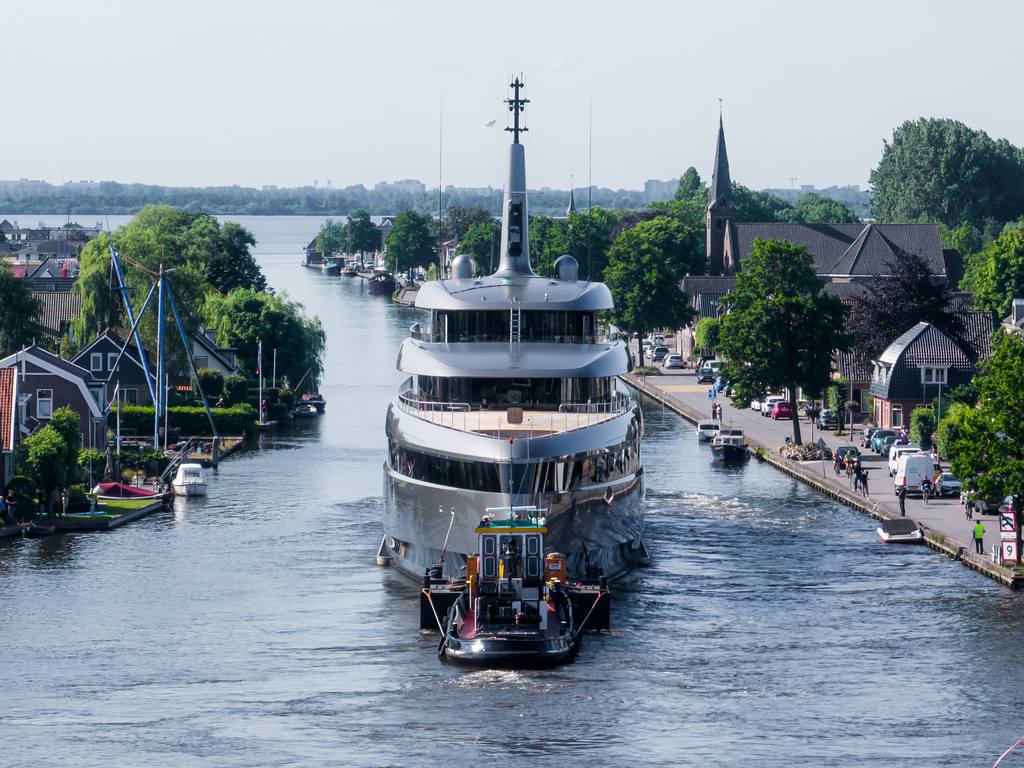
Considering that 25% of that “hotel” energy demand is about making heat, everything that needed heat was identified. The largest consumer was air conditioning.
The reason being that to sufficiently dehumidify the surrounding sea air, the HVAC system needs to cool incoming fresh air to about 7 degrees Celsius, but then, to keep the interior from feeling like a meat locker, heating units must warm the air to the desired temperature for each room.
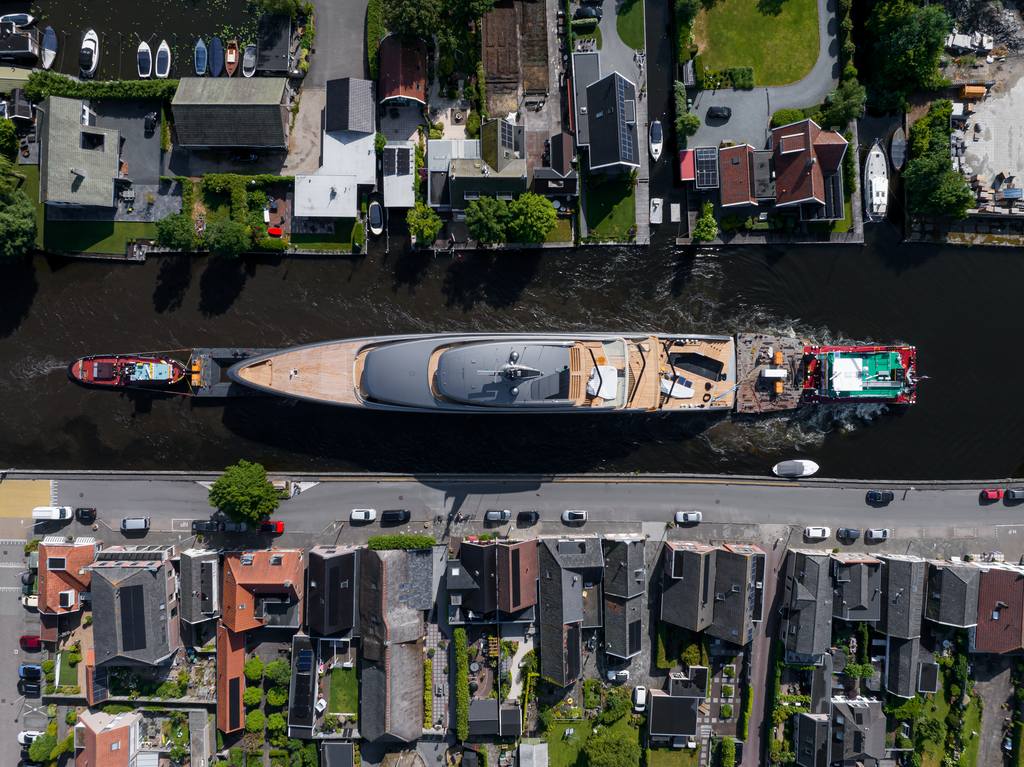
Many points of energy savings
Conventional installations typically reheat with an electric heating element, but Obsidian uses waste heat for that purpose. Not only is waste heat captured from the generators, but also from the AC chillers themselves. This is not just free energy, but it is essentially carbon-free energy because it reuses incidental heat generated by another function. “There are so many points of energy savings integrated on this yacht that it is hard to count,” said Project Manager Mark Jansen.
Urged to explore all avenues, Feadship’s engineers introduced an innovative heat pump system to pull heat from various sources, including ambient sea water. Using a heat pump, which transports thermal energy (heat) from one place to another, is five times more efficient than simply making heat with a regular electrical heating coil, according to Jongepier.
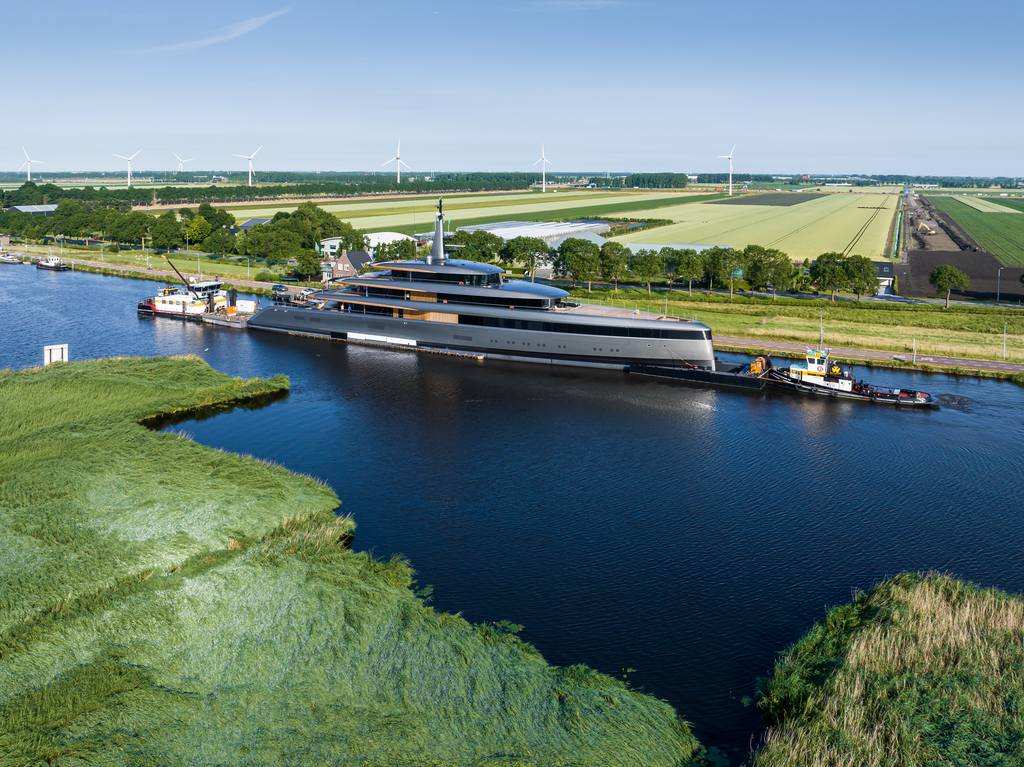
An onboard computer system helps to choose seamlessly the appropriate combination of sources. This translates into the following operational modes:
In harbour at normal sea temperatures plugged into shore power: Heat is provided by AC compressor waste heat, augmented by the heat pump if necessary.
At anchor at normal sea temperature, operating on battery power: Heat provided by AC compressor waste heat, augmented by heat pump if necessary.
Sailing, at anchor or in harbour at normal sea temperature with generators in operation: All necessary heat provided by generator waste heat.
Because the path to carbon-neutral superyachts goes far beyond a single solution, Obsidian also involved fresh approaches to the hull form. De Voogt’s naval architects created the low, slim hull, optimized at cruising speed using computational fluid dynamics (CFD) with the final form being made into a model tested in a towing tank. Complex engineering for balance and weight reduction includes new applications for carbon fibre. The louvered aft deck overhangs, for example, are all carbon fibre attached to the aluminium superstructure and require no support pillars. This weight benefit also offered new deck layout possibilities.
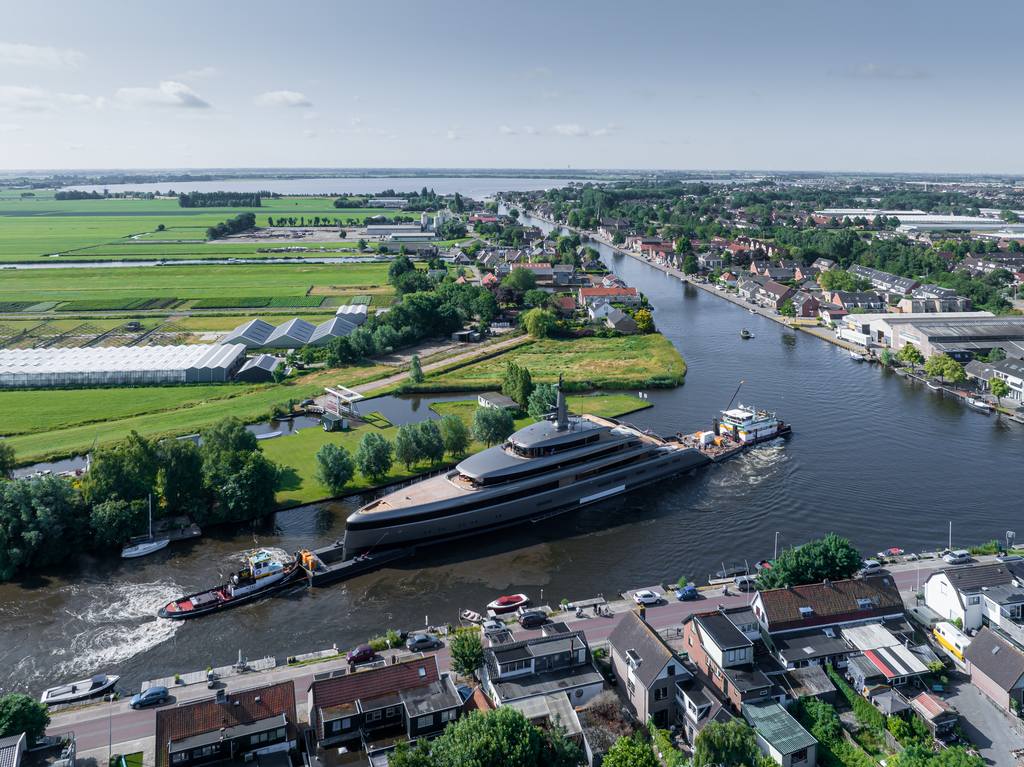
For the first time in many years, Feadship is delivering a yacht with a single level engine room, which gave her designers considerably more freedom in creating the interior layout. It also lends more space for guest accommodation and features a total of seven staterooms. According to Jansen, the volume of this 84-metre yacht is typical of that on 100-metre Feadships.
The layout is just as bold and modern as the exterior profile would suggest. Both the exterior styling and interior design are by the British firm RWD, in collaboration with MONK Design.
There are surprising destination spaces such as an asymmetrical atrium staircase leading to a lower deck dining saloon with an entire wall that opens to provide a terrace view just 75 cm above sea level.
Near the stern is an Aqua Lounge where massive windows below water level offer a unique view from the nearby gym. The Aqua Lounge can also function as a cinema and even a classroom.
From decks to the interior, the design leitmotif is all about surprise – most of the corridors and many of the rooms, as well as all of the al fresco living spaces, are not oriented on a fore and aft or athwartships axis. In fact, except for staterooms, none of the interior rooms have any 90-degree angles. A hidden staircase to a study and a sunken lounge on the main deck are just two more of the unexpected interior elements. But the biggest surprise involves the use of submarine anchors. Eliminating the need for a mooring deck forward allows Obsidian to feature a fantastic interior bow observation lounge with double curved glass floor-to-ceiling windows. Access is via a main deck corridor from the guest accommodation area through the tender garage to this hidden gem.
In keeping with the carbon reduction theme, both of the yacht’s primary tenders are electric-powered and custom made by Tenderworks. Four fast charging stations installed by the yard will allow them to be charged in the water or in the tender garage.
After the sea trials it turned out that Obsidian is even more efficient than previously calculated.


